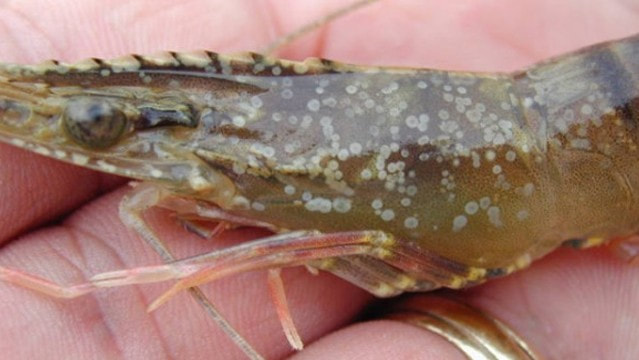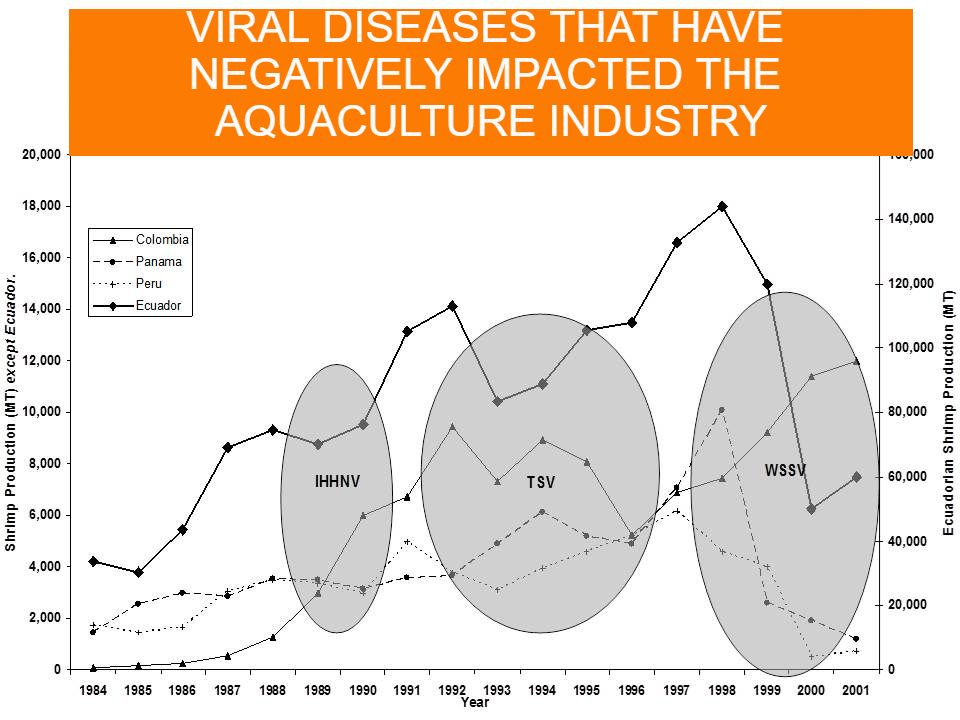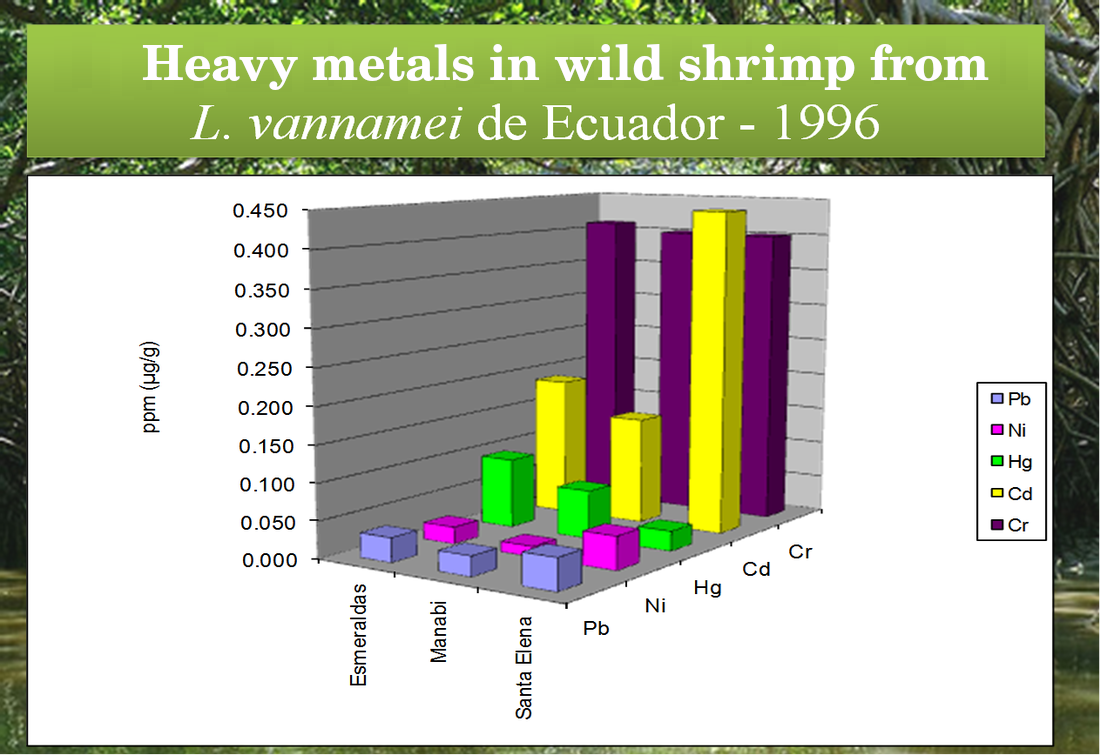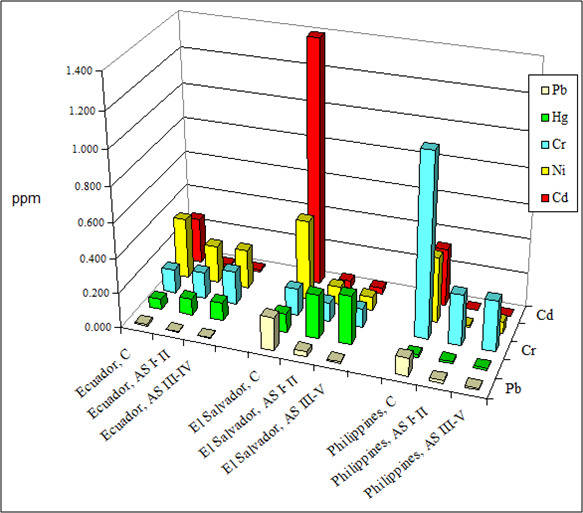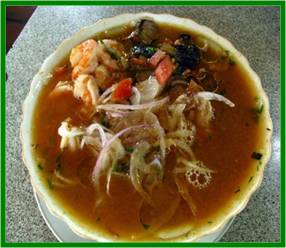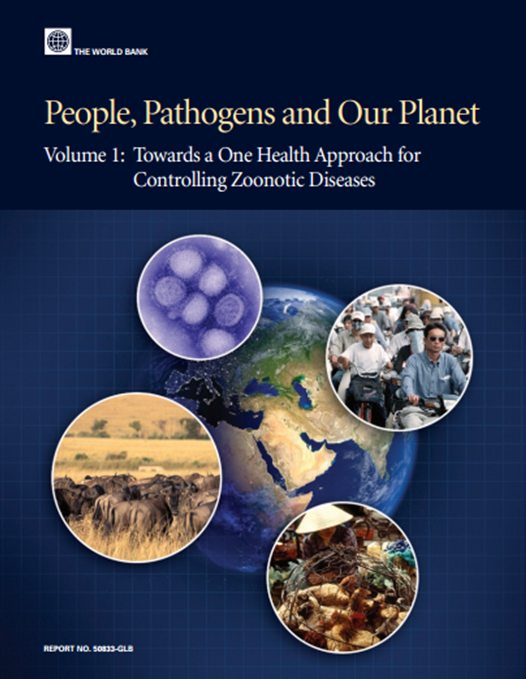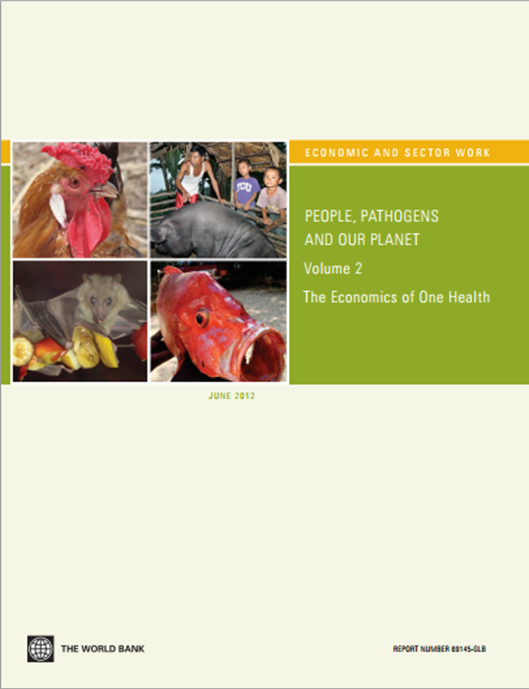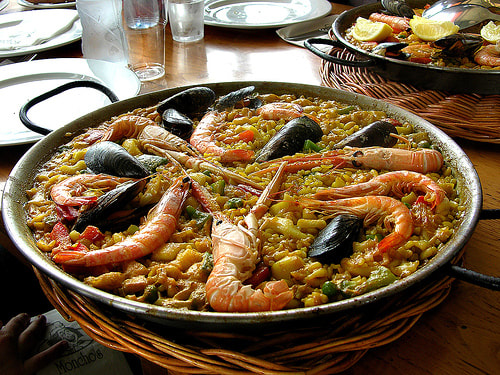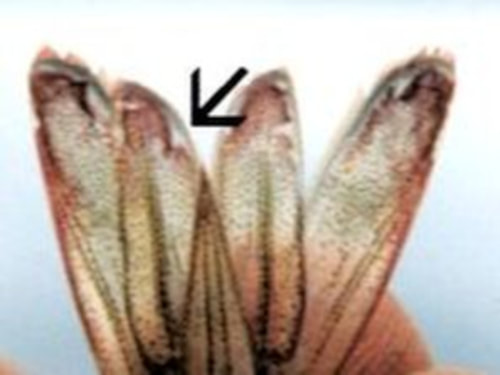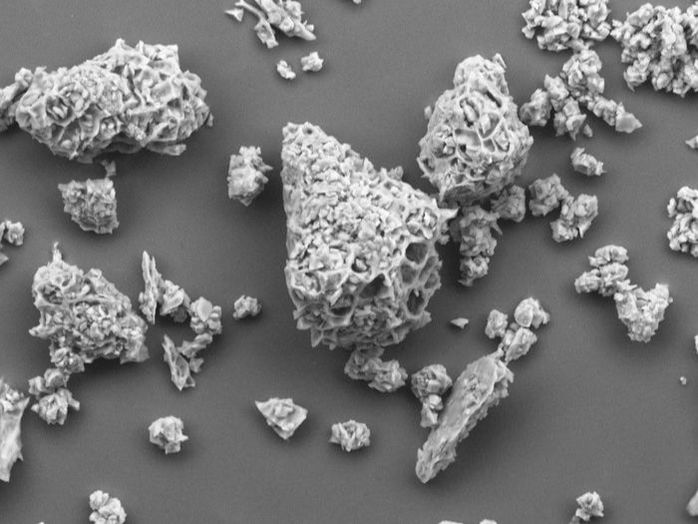Risks associated with chemicals and other agents used in attempts to control White Spot Syndrome Virus
|
This article discusses the environmental, occupational, and food safety status of a wide range of chemical and biological agents used in an attempt to control white spot syndrome virus (WSSV) disease.
This information was compiled from recent literature and the United States Environmental Protection Agency (EPA, http://www.epa.gov) website. To Read The Full Article, Go To: https://www.aquaculturealliance.org/advocate/risks-associated-with-chemicals-and-other-agents-used-in-attempts-to-control-white-spot-syndrome-virus/
| |||||||
MORE SERIOUS SHRIMP DISEASES
|
WSSV: White spot syndrome virus
TSV: Taura syndrome virus IHHNV: Infectious hypodermal and haematopoietic necrosis virus YHV: Yellow head virus IMNV: Infectious Mionecrosis Virus |
Around the world, shrimp populations in their natural habitat are seriously endangered for different reasons:
|
DID YOU KNOW THAT THE SHRIMP'S HEAD CONTAINS THREE TIMES AS MORE OF HEAVY METALS THAN THE BODY?
The shrimp species studied in Ecuador and El Salvador is Litopenaeus
vannamei; in the Philippines it is Penaeus monodon
vannamei; in the Philippines it is Penaeus monodon
|
Fuente: http://siteresources.worldbank.org/INTARD/Resources/PPP_Web.pdf
http://un-influenza.org/files/PeoplePathogensandOur%20Planet.pdf |
Pb: lead;
Hg: mercury; Cr: chromium; Ni: nickel; Cd: cadmium C = head / cephalotorax; AS I-II: abdominal segment I-II; AS III-IV: abdominal segment III-IV. |
•Cd levels are 2-3X higher in cephalothorax (C) than abdominal segments (AS) of L. vannamei from Ecuador and Honduras, and Penaeus monodon of Philippines, and may impact health of people that consume them.
